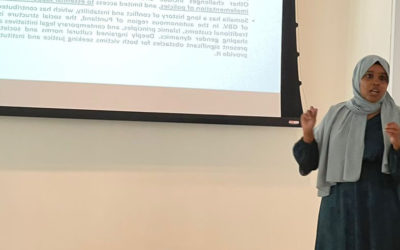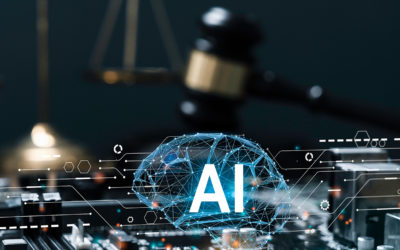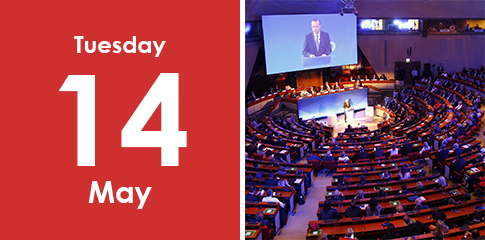Over the years, the field of decision-making was diagnosed through the lens of behavioral science and economics. It was found that decision-makers and negotiators can fall victim to their mental predispositions. While professionals often aspire to reach rational agreements, relying only on the rational mind is improbable due to the constant supply of cognitive resources e.g. attention required to sustain rational thinking.
Why are biases considered taboo?
The limits of what one considers rational traces back to the evolutionary story of mental shortcuts, biases in other words. According to Cambridge dictionary, a bias is the manner in which a person understands and interprets an event based on their set of beliefs and experiences. They expedite our decision-making process in times of stress, fatigue, lack of attention. Blame that on the scarcity of our cognitive resources: attention, energy, memory, perception and patience.
This is when biases get triggered. The moment we cannot extract more insights through rational thinking, the mind goes into an autopilot mode. A lengthy negotiation or decision-thinking workshop that was supposed to yield an optimal outcome deviates to a sub-optimal one. What then may seem like a rationally-driven outcome becomes questionable and potentially frowned upon.
How to tame biases to one’s advantage?
As problematic as biases could be, they have their own raison d’être. They are a natural part of what makes a homo sapien. To that end, an optimal decision-maker and negotiator should consider applying the following principles to tame their biases.
1. Transitivity
If choice (A) appears to be better than (B) and (B) is better than (C), choice (A) should be equidistantly preferred to (C). That is to say that the preferential distance of the optimal choice (A) should be same for choice (B) and choice (C).
2. Invariance
The way in which choices are being presented should not make a significant or predictable difference to the alternative being picked. From the environment to the time of day to weather conditions and other subtle factors, they should all play a role in the decision being taken.
3. Decoy effect
When in doubt about an even number of alternatives, introduce another one. Transforming the set of decisions from an even-numbered to an odd one makes it easier to select from. The asymmetrical power of the odd-numbered set give rise to a dominant option which then can be dwelled on further.
4. Logical mental models
Nobel prize winner, Daniel Kahneman used the analogy of systems when distinguishing between the main different kinds of decision-making processes. The system that is bias-dominated is characterized by abstract, fast and unconscious thinking. When the rational system, the one that is analytical, exhausts the decision-maker, out of stress or fatigue, the mind will automatically switch to that automatic thinking system to resolve the issue at hand. In order to reduce the gap between both systems, while leveraging both their powers, one can practice visualizing pre and post mortem the extent of rationality (what we perceive plausible) and intuition (what we think plausible) and then draw the distance between them on a graph. The wider the gap, the more work needs to be done to arrive to an optimal decision, one that respects the rational thinking as well as the intuitive voice one has.
5. Anterior-Posterior negotiator dialogue
Another thing to consider is that each of us has at least two personas voicing opposing thoughts; in philosophical terms, dualism. When sitting at a table with negotiating counterparties, realize that each of them, including yourself has an anterior negotiator (that is visible to others) and a posterior one (that is tucked away). The former is usually influenced by external factors such as what is explicitly being told and the demands from their superiors for the potential outcome. The latter represents internal concerns and wishes the negotiator desire to disclose but for some reason does not find it appropriate to do so. Hence, what is needed is to bring both the anterior and posterior negotiators closer to one another. At the individual level and team level, it is worth actively and consciously discussing both faces of negotiators inside each individual and find ways to benefit from both.
6. Equally-weighted decision-making
Before finalizing a decision, ensure that the different alternatives were assigned approximately equal weight. To do so, one has to give equal energy and time in studying every alternative before the elimination process commences.
7. Mental muscle durability
Attention and working memory are two mental mechanisms that dynamically flex together during social engagements. A biasing effect starts to manifest the moment a time lag happens between them. Think of the last time you recall an event. What you may well have narrated from an earlier negotiation meeting might not be as accurate as the original. What you can do is raise your accountability to your memory recall. Much like in the standard confusion matrix used in statistical modelling: there is a case for “True Positive” and another for “False Positive”. For instance, on retrieving pieces of information, ask yourself whether what you are reinstating has actually happened or approximately so.
8. Multiple Conflictual Criteria Decision-Making
While there is more than one way to take a decision, from a naturalistic (intuitive) manner to a logical (rational) manner, one has to reflect on which they more resort to. Following that is a consideration to adopt a multi-factorial framework that considers the sum of both, intuition and rationale by introducing opposing items (pieces of information) that challenge each premise. Once alignment is close to optimal between the intuitive and the rational, the decision-maker can pursue the aligned outcome, now being considered the preferred.
Mind the gap between bounded rationality and perceived rationality
In adhering to the above principles, one would be able to expand the realm of their limited rationality (bounded rationality) while reflecting on the irrationalities of their own design thinking (perceived rationality). The gap between what a decision-maker considers a rational thinking process, and the actual invested rationality will narrow. Hence, an optimal decision can be reached. Let’s end with a brutally interesting story. When Brian Epstein, manager of the Beatles negotiated the group’s financial share of their movie, A Hard Day’s Night, he aimed at what he considered an aggressive demand of 7.5% of the movie’s profit. The producers were ready to pay up to 25%. Apparently, even a successful manager as Epstein had a significantly wider gap between his bounded and perceived rationality that goes beyond his awareness.
WALID LUFTY, INP’14
Behavioral Economist & Data Scientist, Behaviour (Sydney, Australia) and UAE Federal Government
walid@behaviour.ai









Great 👍 & perfect
Thanks for this.